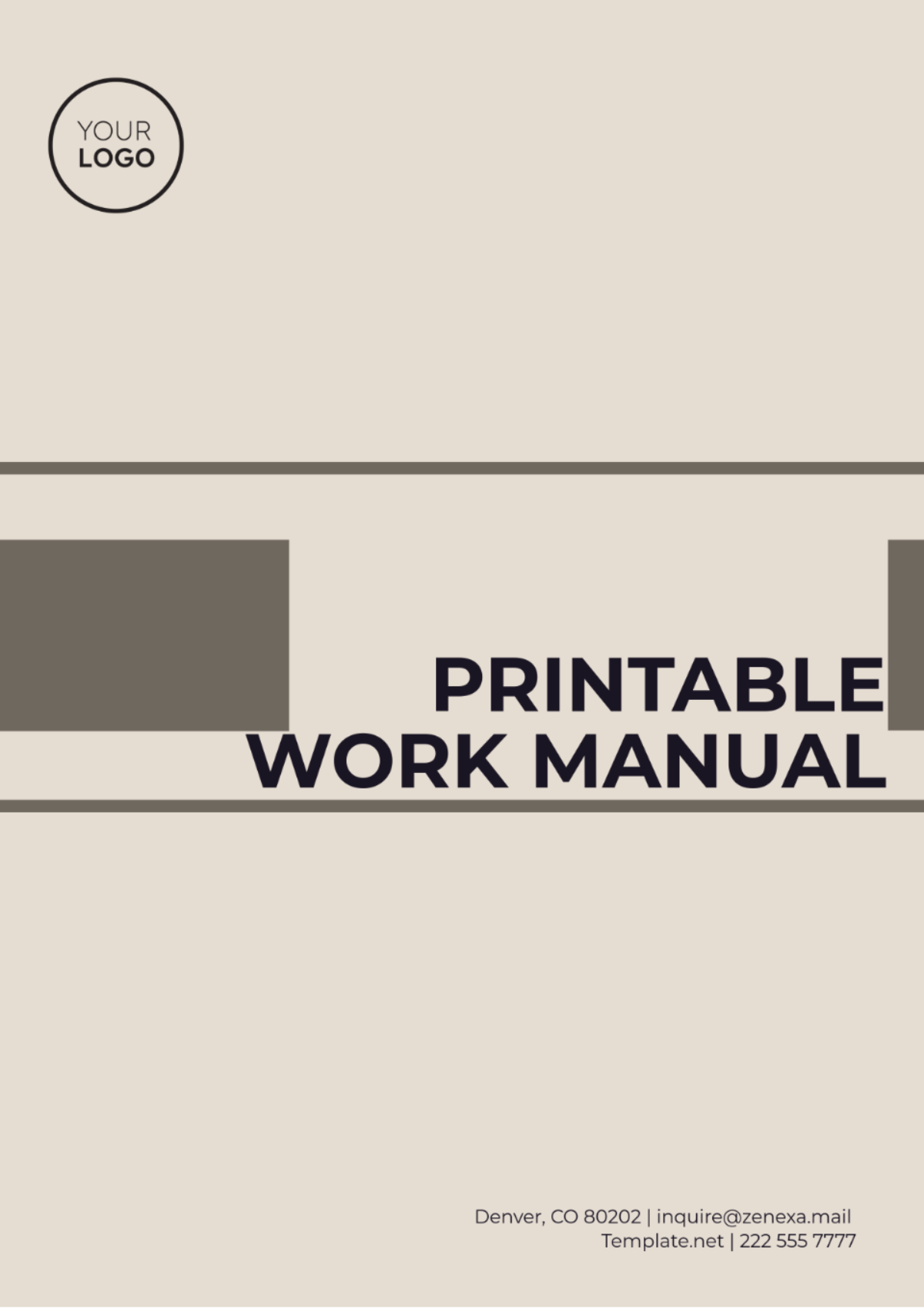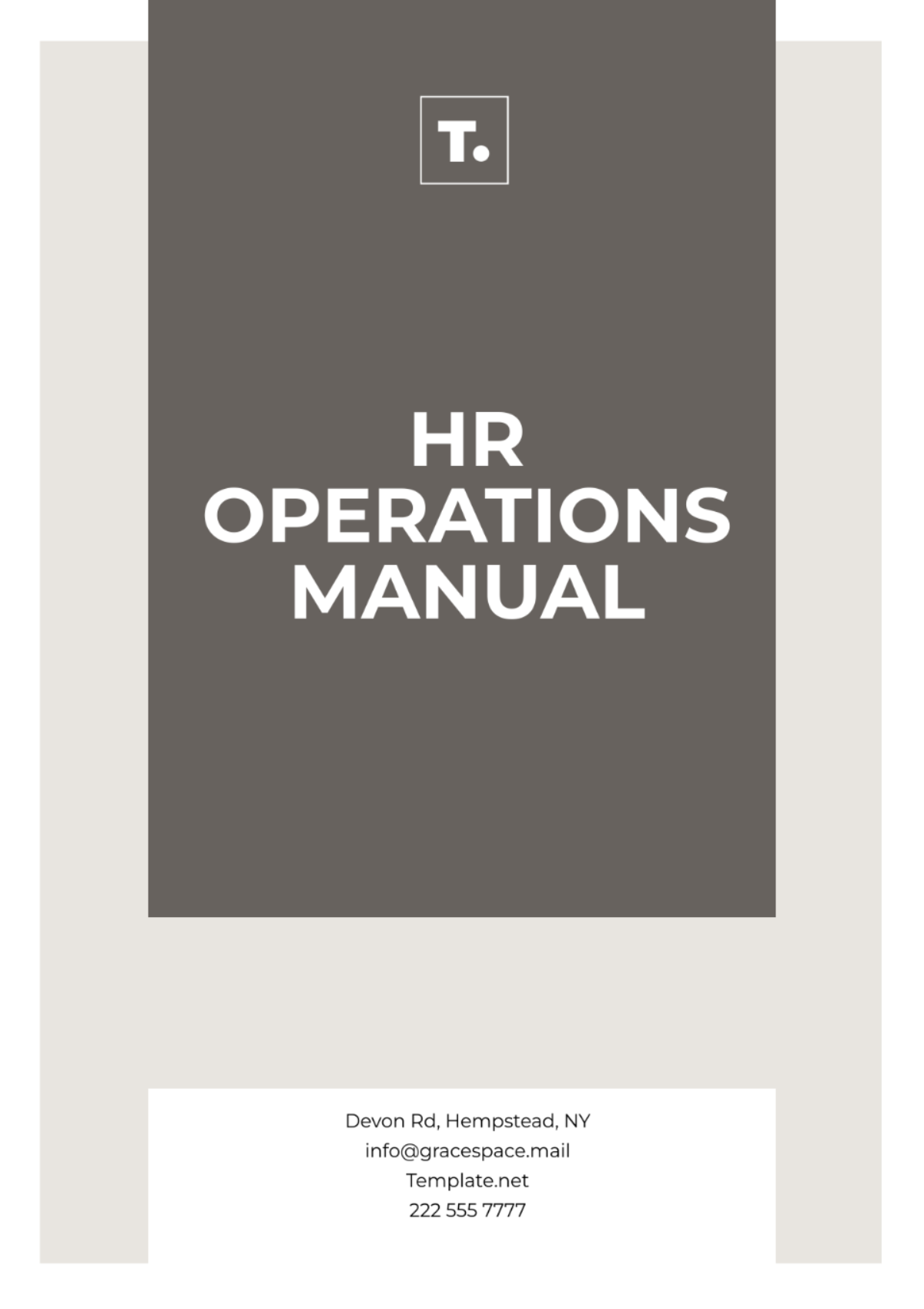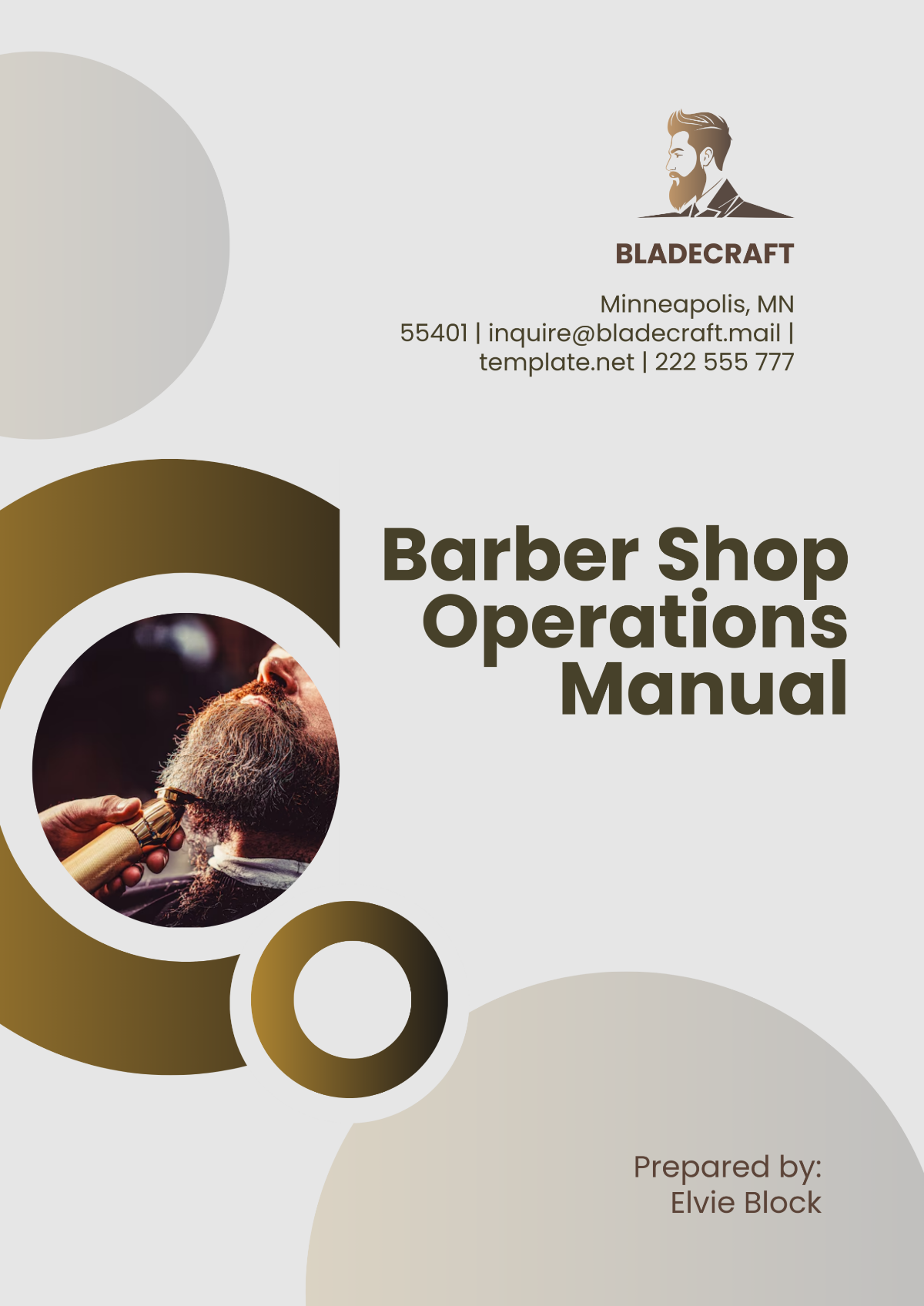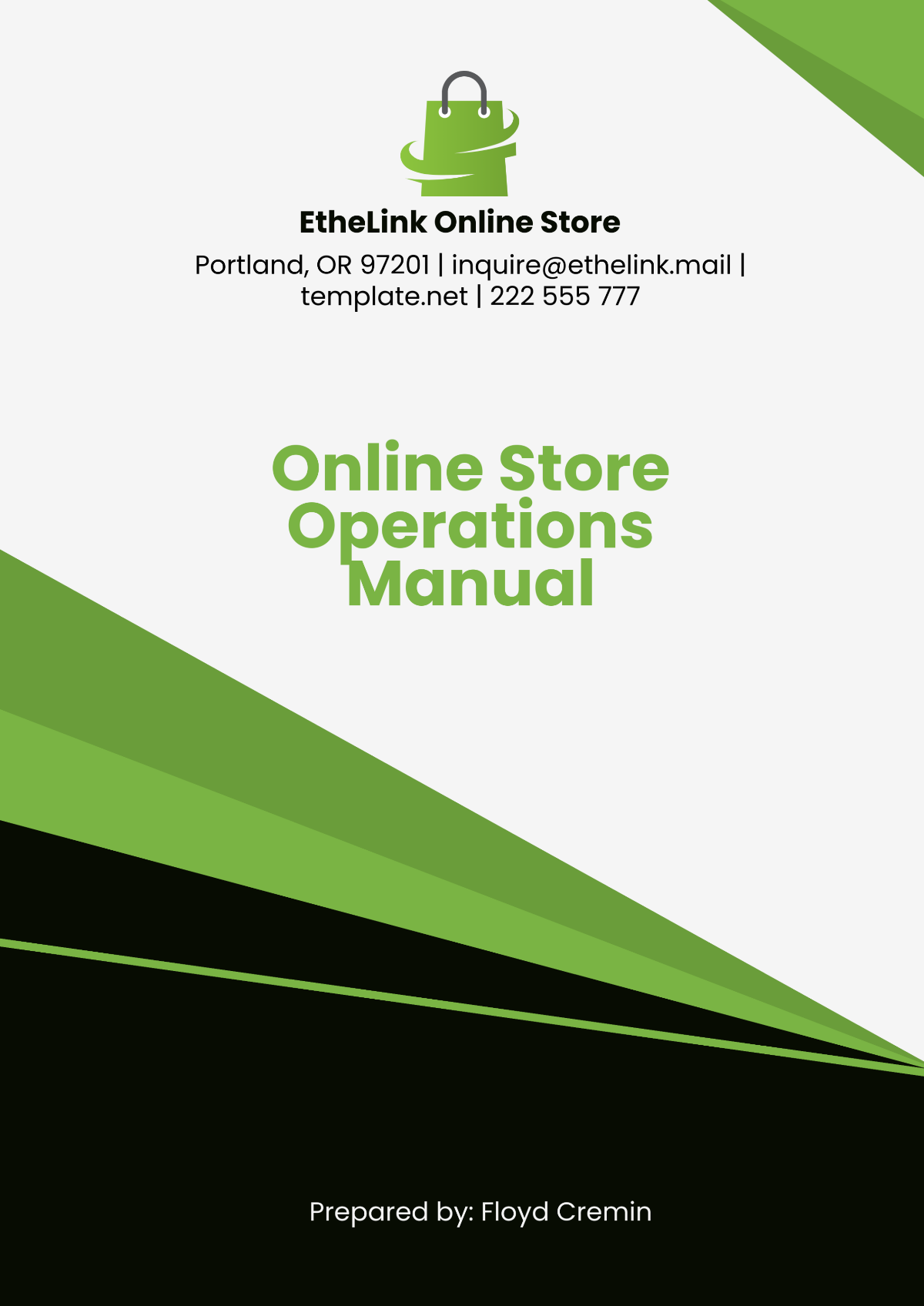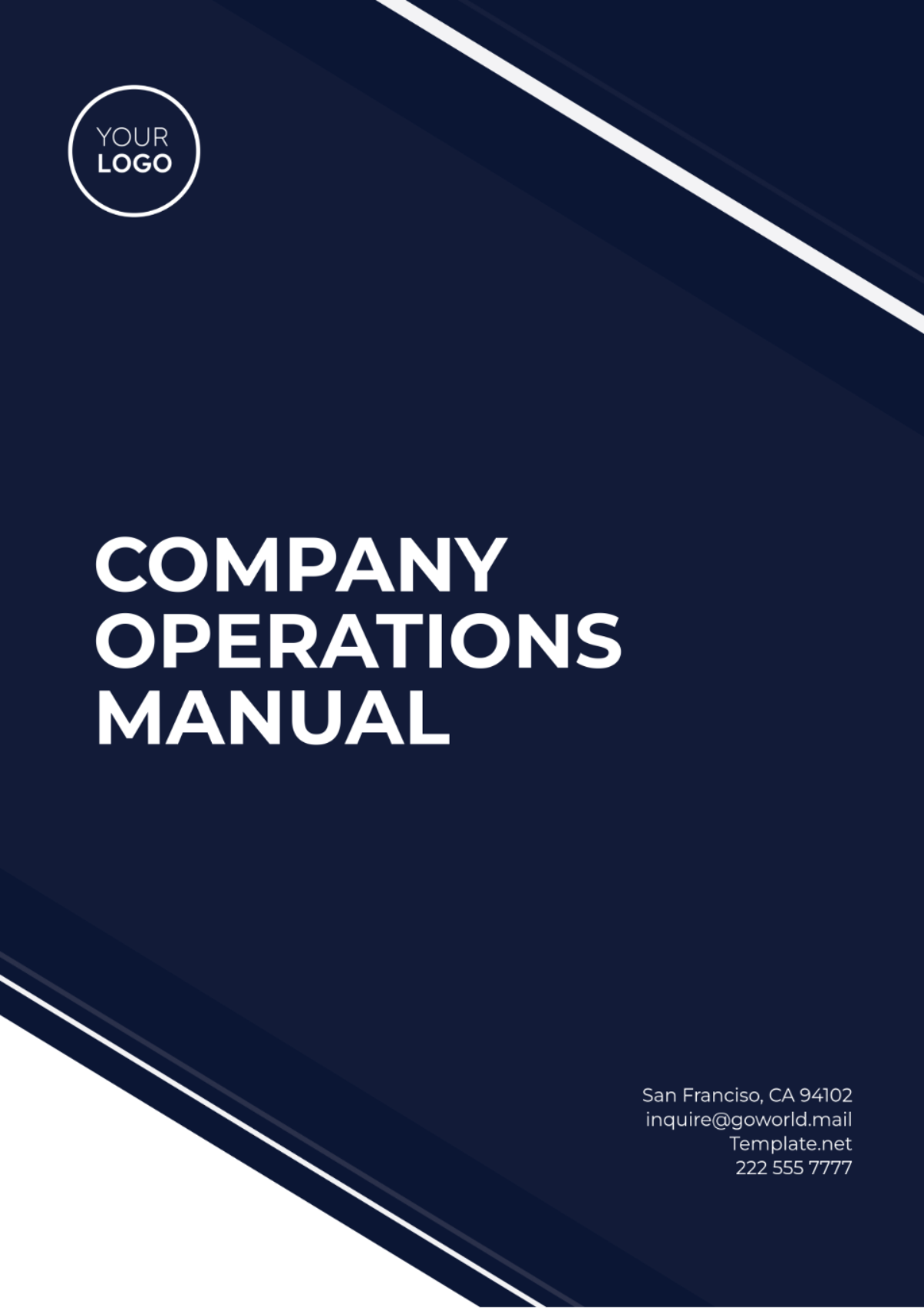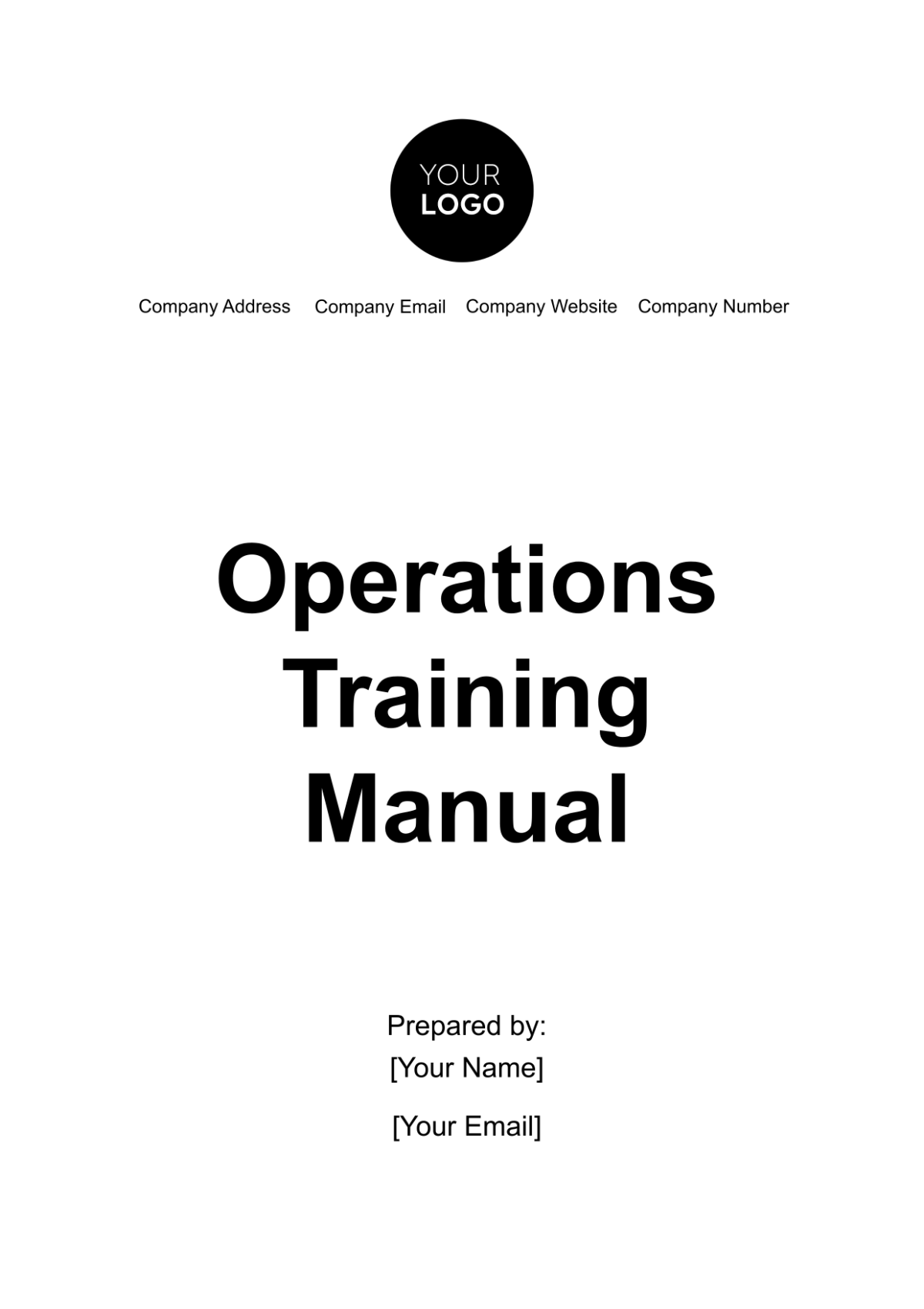Operations Customer Support SOP Manual
I. Introduction
This Operations Customer Support Standard Operating Procedure (SOP) Manual outlines the [Your Company Name]’s guidelines and protocols for providing efficient and effective customer support services. This manual serves as a comprehensive resource for all staff involved in customer-facing roles, ensuring consistency and quality in service delivery.
II. Purpose
The purpose of this SOP manual is to:
Establish standardized procedures for addressing customer inquiries, issues, and requests.
Enhance customer satisfaction by providing timely and accurate assistance.
Streamline communication channels and ticket management processes.
Define roles, responsibilities, and escalation protocols for customer support staff.
III. Scope
This SOP manual applies to all employees involved in customer support activities within the organization. It encompasses the handling of customer inquiries, ticket management, troubleshooting procedures, escalation protocols, response time standards, feedback management, performance metrics, training and development, quality assurance, documentation, tools and resources, continuous improvement initiatives, compliance, legal considerations, and emergency response procedures.
IV. Definitions
Customer: An individual or entity that utilizes the products or services provided by the organization.
Ticket: A record of customer inquiries, issues, or requests logged in the support system for tracking and resolution.
Escalation: The process of transferring unresolved issues to higher levels of support or management for resolution.
SLA (Service Level Agreement): Agreed-upon standards for response time and resolution time for customer inquiries.
KPIs (Key Performance Indicators): Metrics used to measure the performance and effectiveness of customer support activities.
V. Responsibilities
Customer Support Representative:
Respond to customer inquiries via phone, email, or chat in a timely and professional manner.
Log all customer interactions and updates in the ticketing system.
Troubleshoot technical issues and provide solutions or escalate to the appropriate team if necessary.
Follow up with customers to ensure issues are resolved satisfactorily.
Adhere to response time standards and SLAs.
Collect and relay customer feedback to the relevant departments for improvement.
Team Lead/Supervisor:
Supervise and support customer support representatives.
Monitor ticket queues and ensure timely resolution of customer inquiries.
Provide coaching and training to team members.
Handle escalated issues and customer complaints.
Analyze performance metrics and identify areas for improvement.
Quality Assurance Analyst:
Conduct quality assurance checks on customer interactions.
Evaluate adherence to SOPs and customer service standards.
Provide feedback and recommendations for improvement.
Monitor customer feedback and identify trends or recurring issues.
VI. Communication Channels
Phone Support:
Provide a dedicated phone line for customer inquiries and support.
Ensure availability of trained representatives to handle incoming calls.
Maintain a professional and courteous demeanor during phone interactions.
Email Support:
Designate an email address for customer inquiries and support tickets.
Respond to emails promptly and professionally.
Use standardized email templates for consistency and efficiency.
Live Chat Support:
Offer real-time chat support through the organization's website or platform.
Staff live chat with knowledgeable representatives to assist customers with immediate queries.
Ensure responsiveness and availability during designated chat support hours.
VII. Ticket Management
Ticket Logging:
Log all customer inquiries, issues, and requests into the ticketing system.
Include relevant details such as customer information, issue description, priority level, and timestamps.
Assign tickets to appropriate support representatives for resolution.
Ticket Prioritization:
Prioritize tickets based on urgency, impact on the customer, and SLA requirements.
Ensure high-priority issues are addressed promptly to minimize customer downtime.
Ticket Resolution:
Work towards timely resolution of tickets within agreed-upon SLAs.
Communicate updates and progress to customers throughout the resolution process.
Close tickets only after confirming resolution and customer satisfaction.
VIII. Inquiry Handling
Information Gathering:
Gather relevant information from the customer to understand the nature of the inquiry.
Ask probing questions to clarify the issue and identify underlying problems.
Issue Diagnosis:
Analyze the gathered information to diagnose the root cause of the issue.
Use troubleshooting techniques and knowledge bases to identify potential solutions.
Solution Provision:
Provide accurate and actionable solutions or workarounds to address the customer's inquiry.
Clearly explain the steps to be taken and ensure the customer understands the resolution process.
IX. Troubleshooting Procedures
A. Initial Assessment:
When receiving a customer inquiry or support request, perform an initial assessment to understand the nature of the issue.
Gather relevant information from the customer, including product details, error messages, and steps taken before encountering the issue.
B. Issue Identification:
Utilize diagnostic tools, knowledge base articles, and expertise to identify the root cause of the issue.
Analyze symptoms and error codes to pinpoint potential causes and narrow down troubleshooting steps.
C. Isolation and Reproduction:
Attempt to isolate the issue by replicating it in a controlled environment, if possible.
Determine whether the issue is reproducible and assess its impact on system functionality or customer experience.
D. Troubleshooting Steps:
Step 1: Basic Checks
Verify basic system configurations, settings, and connections to rule out common issues.
Confirm that all hardware components are functioning properly and securely connected.
Step 2: Software Verification
Check for software updates, patches, or compatibility issues that may affect system performance.
Review system logs, error messages, and event notifications for clues about the underlying problem.
Step 3: User Interaction
Engage with the customer to gather additional information and insights into their workflow or usage patterns.
Ask clarifying questions to better understand the context of the issue and potential user errors.
Step 4: Diagnostic Testing
Perform diagnostic tests, simulations, or troubleshooting procedures to identify specific failure points or discrepancies.
Use specialized tools or utilities to diagnose hardware, software, or network-related issues accurately.
Step 5: Escalation
If unable to resolve the issue independently, escalate the case to a higher support tier or specialized team for further investigation.
Provide detailed documentation of troubleshooting steps taken and findings for the escalation team's reference.
E. Resolution and Verification:
Once the issue has been identified and resolved, verify the solution with the customer to ensure their satisfaction.
Confirm that the problem has been adequately addressed and that the system or service is functioning as expected.
F. Documentation and Follow-Up:
Document the troubleshooting process, including steps taken, findings, and resolution details, in the customer support ticket.
Provide clear and concise instructions to the customer on how to prevent or mitigate similar issues in the future.
Follow up with the customer after issue resolution to ensure continued satisfaction and address any remaining concerns.
X. Escalation Protocols
Internal Escalation:
Escalate unresolved issues to the appropriate internal teams or departments for further investigation or resolution.
Follow established escalation paths and protocols to ensure issues are addressed promptly.
External Escalation:
If necessary, escalate issues to external vendors, partners, or service providers for resolution.
Maintain communication with the customer and provide updates on the escalation process.
Escalation Documentation:
Document all escalations, including the issue details, actions taken, and resolution outcomes.
Use escalation logs to track the status of escalated issues and ensure follow-up actions are completed.
XI. Response Time Standards
A. Initial Response Time:
Aim to acknowledge customer inquiries or support requests within a specified timeframe (e.g., 24 hours).
Provide an initial response confirming receipt of the inquiry and setting expectations for further communication.
B. Resolution Time:
Set targets for resolving customer issues based on their priority level and complexity.
Adhere to SLAs and response time standards to ensure timely resolution and customer satisfaction.
C. Communication Updates:
Keep customers informed of any delays or changes to the resolution timeline.
Provide regular updates on the progress of issue resolution to manage expectations.
XII. Customer Feedback Management
A. Feedback Collection Channels:
Online Feedback Forms:
Customers can submit feedback via online forms available on our website or customer portal.
Feedback forms include structured fields for rating service quality, providing comments, and suggesting improvements.
Email Feedback:
Customers can email their feedback directly to a designated feedback email address monitored by the customer support team.
Support agents promptly acknowledge receipt of feedback emails and initiate appropriate follow-up actions.
Phone Surveys:
After resolving support inquiries, agents may conduct brief phone surveys to gather immediate feedback on the support experience.
Surveys focus on service quality, agent professionalism, issue resolution effectiveness, and overall satisfaction.
B. Feedback Analysis and Categorization:
Data Collection and Aggregation:
Feedback received from various channels is collected, aggregated, and stored in a centralized feedback management system.
Support managers regularly review feedback data to identify trends, patterns, and recurring issues.
Categorization and Tagging:
Feedback is categorized based on themes, such as product functionality, service responsiveness, communication effectiveness, and user experience.
Each feedback entry is tagged with relevant metadata, including customer details, issue severity, and support agent involved.
C. Feedback Resolution Workflow:
Initial Triage:
Upon receiving feedback, support agents triage the entries based on urgency, severity, and potential impact on customer satisfaction.
Urgent or critical feedback is prioritized for immediate action, while less urgent items are scheduled for review and resolution.
Investigation and Response:
Support managers investigate feedback items to understand the underlying issues, root causes, and potential corrective actions.
Depending on the nature of the feedback, support agents or specialized teams may be assigned to investigate and respond to customer concerns.
Resolution and Follow-Up:
Once a resolution is identified, support agents communicate with the customer to provide updates, address concerns, and obtain feedback on the proposed solution.
Follow-up actions may include implementing corrective measures, offering compensation or goodwill gestures, and ensuring customer satisfaction.
D. Continuous Improvement Initiatives:
Customer feedback serves as a valuable source of insights for continuous improvement initiatives within the customer support function.
Support managers analyze feedback trends to identify systemic issues, prioritize improvement opportunities, and implement preventive measures.
Feedback-driven improvements are communicated to frontline support agents through training sessions, knowledge-sharing sessions, and performance reviews.
E. Performance Monitoring and Reporting:
Key performance indicators (KPIs) related to customer feedback, such as feedback volume, sentiment analysis, resolution times, and customer satisfaction scores, are regularly monitored and reported.
Performance dashboards and reports provide visibility into feedback management metrics, enabling data-driven decision-making and accountability.
XIII. Performance Metrics
Key Performance Indicators (KPIs):
Define and track KPIs related to customer support performance, such as response time, resolution time, customer satisfaction scores, and ticket volume.
Use KPIs to evaluate the effectiveness of support operations and identify areas for optimization.
Performance Reporting:
Generate regular reports summarizing key support metrics and performance trends.
Share performance reports with relevant stakeholders to facilitate data-driven decision-making and continuous improvement efforts.
Benchmarking:
Benchmark support performance against industry standards and best practices to gauge competitiveness and identify areas for improvement.
XIV. Training and Development
New Hire Training:
Provide comprehensive training programs for new customer support representatives to familiarize them with products, services, and support processes.
Cover topics such as product knowledge, communication skills, troubleshooting techniques, and customer service best practices.
Ongoing Training:
Offer ongoing training and development opportunities to support representatives to enhance their skills and knowledge.
Conduct regular training sessions on new products, updates, and support tools to ensure staff are equipped to address customer needs effectively.
Skills Development:
Encourage skill development and specialization among support staff to improve service quality and efficiency.
Provide opportunities for certifications, workshops, and skill-building exercises to develop expertise in specific areas.
XV. Quality Assurance
QA Checks:
Implement quality assurance checks on customer interactions to ensure adherence to support standards and procedures.
Evaluate communication quality, accuracy of information provided, and compliance with SOPs.
Feedback Loop:
Provide feedback to support representatives based on QA evaluations to identify areas for improvement and reinforce best practices.
Use QA findings to identify systemic issues and recommend process improvements.
Continuous Monitoring:
Continuously monitor customer interactions and support performance to maintain service quality standards.
Regularly review QA metrics and adjust processes as needed to address emerging issues or trends.
XVI. Documentation and Record-Keeping
Ticket Documentation:
Maintain detailed records of customer inquiries, issues, and resolutions in the ticketing system.
Document all communication and interactions with customers for future reference and audit purposes.
Knowledge Base Management:
Develop and maintain a centralized knowledge base containing articles, FAQs, troubleshooting guides, and product documentation.
Ensure information in the knowledge base is accurate, up-to-date, and easily accessible to support representatives and customers.
Compliance Documentation:
Maintain documentation of compliance-related activities, such as data privacy regulations, service level agreements, and industry standards.
Keep records of customer consent, opt-ins, and other compliance-related communications.
XVII. Tools and Resources
Support Tools:
Provide access to support tools and software platforms to facilitate efficient ticket management, communication, and collaboration.
Ensure support representatives are trained on the use of these tools and have access to necessary resources.
Knowledge Repositories:
Utilize internal knowledge repositories, documentation, and resources to support issue resolution and troubleshooting efforts.
Regularly update and expand knowledge repositories to reflect changes in products, services, and support processes.
Customer Relationship Management (CRM) System:
Implement a CRM system to manage customer interactions, track support history, and maintain customer profiles.
Leverage CRM data to personalize customer interactions, anticipate needs, and improve overall service delivery.
XVIII. Continuous Improvement
Feedback Integration:
Integrate customer feedback and QA insights into continuous improvement initiatives.
Use feedback to identify areas for enhancement and prioritize improvement projects.
Process Optimization:
Continuously review and optimize support processes to streamline workflows, reduce response times, and enhance efficiency.
Implement process improvements based on data-driven analysis and performance metrics.
Technology Enhancement:
Explore new technologies and tools to enhance the efficiency and effectiveness of customer support operations.
Invest in automation, AI, chatbots, and self-service portals to augment support capabilities and improve customer experiences.
XIX. Compliance and Legal Considerations
Data Privacy:
Ensure compliance with data privacy regulations and guidelines when handling customer data and sensitive information.
Implement measures to protect customer privacy and secure confidential data against unauthorized access or disclosure.
Service Level Agreements (SLAs):
Adhere to SLAs and contractual obligations regarding response times, resolution times, and service quality.
Monitor SLA compliance and take corrective action when necessary to meet contractual commitments.
Industry Regulations:
Stay abreast of industry-specific regulations, standards, and best practices related to customer support and service delivery.
Maintain compliance with relevant regulations and ensure support operations align with industry standards.
XX. Emergency Response Procedures
In the event of an emergency situation that poses a threat to the safety of customers, employees, or operations, the following procedures are to be followed:
Emergency Notification:
Immediately report the emergency to the designated emergency response team or authority, such as the facility manager, security personnel, or emergency services (police, fire department, medical services).
Activate emergency communication channels, including alarms, intercom systems, or mass notification tools, to alert all personnel and visitors on-site.
Evacuation Procedures:
If evacuation is necessary, follow established evacuation routes and assembly points as outlined in the emergency evacuation plan.
Assist customers and visitors in evacuating the premises safely, providing guidance and assistance as needed.
Do not use elevators during evacuation unless directed to do so by emergency personnel.
First Aid and Medical Assistance:
Provide immediate first aid assistance to individuals requiring medical attention, if trained to do so.
Contact emergency medical services (EMS) for assistance with more serious injuries or medical emergencies.
Administer CPR, AED, or other life-saving measures if necessary and trained to do so.
Fire Safety Procedures:
If a fire is detected, activate the nearest fire alarm pull station and evacuate the building following fire evacuation procedures.
Use fire extinguishers only if trained to do so and if the fire is small and contained.
Close doors behind you to contain the spread of fire and smoke.
Security Threat Response:
In the event of a security threat, such as an active shooter or intruder, follow lockdown procedures and seek shelter in a secure location.
If safe to do so, provide assistance to others in securing themselves and barricading doors.
Follow instructions from law enforcement officers and remain calm until the situation is resolved.
Communication and Coordination:
Maintain open communication with emergency response personnel and provide them with accurate and timely information about the situation.
Coordinate with designated emergency response team members to ensure a coordinated and effective response to the emergency.
Post-Emergency Procedures:
After the emergency situation has been resolved, conduct a debriefing session to review the response and identify lessons learned.
Document any injuries, damages, or incidents that occurred during the emergency and report them to the appropriate authorities.
XXI. Appendices
Appendix A: Glossary of Terms
Appendix B: Sample Email Templates
Appendix C: Customer Feedback Survey Template
Appendix D: Training and Development Resources
Appendix E: Compliance Checklist
Appendix F: Emergency Contact Information
Appendix G: SOP Revision History



